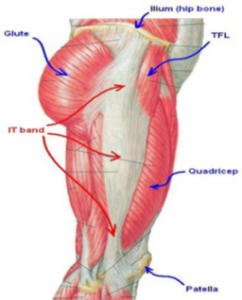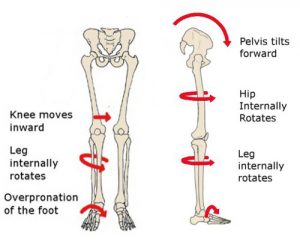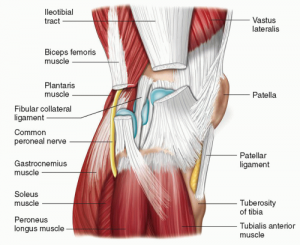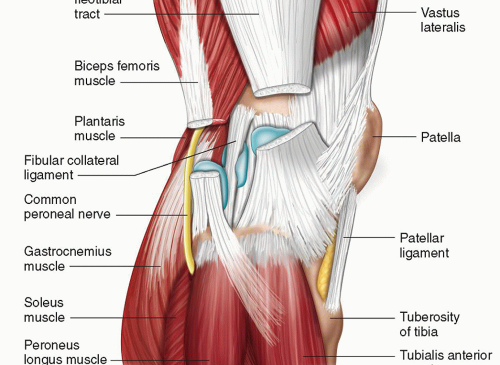What is the IT band?
The IT band is an extremely dense strip of tissue down the outside (lateral) thigh. It extends down from the Ilium (pelvis), Tensor Fascia Lata (TFL) and the Glute complex to the lateral femur (thigh bone) and tibia (shin). It acts as the tendinous insertion therefore transmitting the muscular force down  onto the femur/tibia. These muscles combined, control hip rotation and extension which are both extremely important for running.
onto the femur/tibia. These muscles combined, control hip rotation and extension which are both extremely important for running.
The biomechanics of running show that the femur and tibia are meant to internally rotate as the foot lands but under eccentric control, store the energy from this movement in the subsequent tendons and then release the sorted energy on the propulsion phase.
Potential Causes
Evidence has suggested there are two distinct categories of factors, intrinsic and extrinsic, that may lead to developing lateral knee pain. Extrinsic factors  such as; footwear condition, running surfaces, elevation changes during a run are all said to have a contributing factor. Intrinsic factors such as; being female, weak hip external rotators, weak hip abductors, poor neuromuscular control of hip musculature, an increase in femoral adduction during the stance phase of the gait are all found to have an increased risk of suffering from IT band issues. These intrinsic and extrinsic factors accompanied with a sharp increase in training load/intensity seem to be the ingredients for developing several lower limb overuse injuries including IT band syndrome (ITBS). (Lavine, 2010, Strauss et al, 2011, Noehren et al, 2014)
such as; footwear condition, running surfaces, elevation changes during a run are all said to have a contributing factor. Intrinsic factors such as; being female, weak hip external rotators, weak hip abductors, poor neuromuscular control of hip musculature, an increase in femoral adduction during the stance phase of the gait are all found to have an increased risk of suffering from IT band issues. These intrinsic and extrinsic factors accompanied with a sharp increase in training load/intensity seem to be the ingredients for developing several lower limb overuse injuries including IT band syndrome (ITBS). (Lavine, 2010, Strauss et al, 2011, Noehren et al, 2014)
Rehabilitation
 There is some difficulty is diagnosing ITBS as the insertion point for the IT band is very close to the bicep femoris insertion, so it is very important for clinicians to differentiate between the two structures as pain can radiate around the entire lateral knee complex. Several other structures in and around the lateral knee; Lateral collateral ligament, Lateral fat pad, several bursae, meniscus tears and the insertion of the lateral gastrocnemius can all produce pain around the lateral knee.
There is some difficulty is diagnosing ITBS as the insertion point for the IT band is very close to the bicep femoris insertion, so it is very important for clinicians to differentiate between the two structures as pain can radiate around the entire lateral knee complex. Several other structures in and around the lateral knee; Lateral collateral ligament, Lateral fat pad, several bursae, meniscus tears and the insertion of the lateral gastrocnemius can all produce pain around the lateral knee.
When a diagnosis of ITBS has been ascertained then an inclusive rehabilitation programme should be produced covering as many of the potential risk factors as possible. Altering running volume/intensity, conditioning of the lower limb musculature, neuromuscular training etc can all have a significant positive effect on ITBS. However, a popular method to attempt to lengthen the IT band by rolling/massaging does not have the desired effect. It has been shown the force required to actually deform the IT band 1% to be in excess of 900kg of force! It’s not worth the pain people!! (Chaudhry et al, 2008)
For any further questions please get in contact


Recent Comments